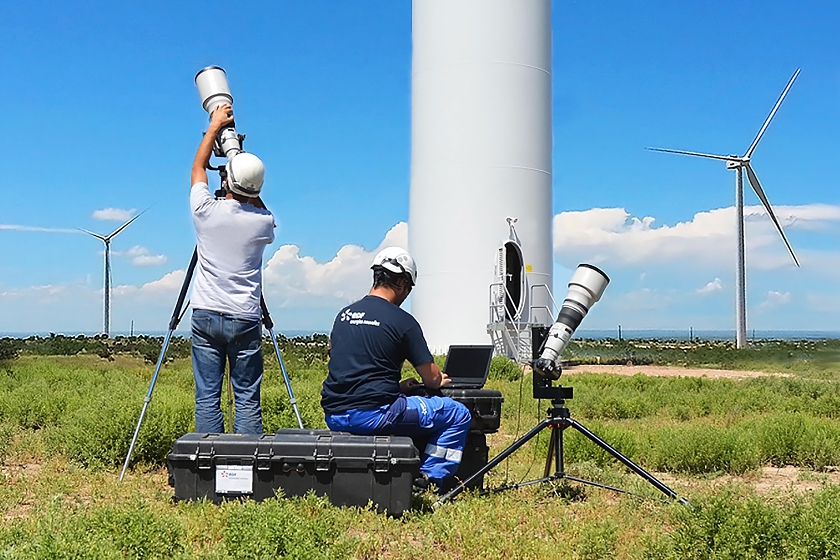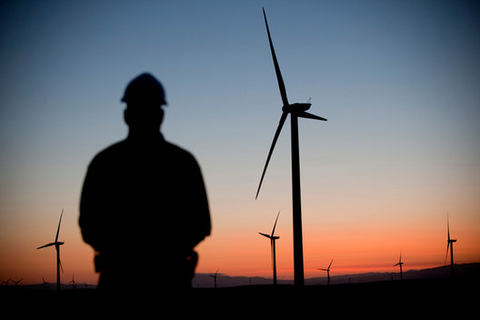NERC GADS Reporting to Include Wind Power
 Considering the recent reports that wind power capacity recently surpassed hydroelectric capacity in the U.S. for the first time (AWEA, 2017), it only makes sense that U.S. regulators would like to capture performance data as part of the Generating Availability Data System (GADS) reporting program. Actually, GADS for wind generators started about 10 years ago, with participation from the American Wind Energy Association (AWEA), Independent System Operators (ISOs), software vendors, operators, and manufacturers. The North American Electric Reliability Corporation (NERC) has promoted the upcoming requirements with webinars, classes, and presentations at AWEA conferences. However, even with past efforts to introduce and educate on GADS, collecting the data for reporting will be no small endeavor, and stakeholders in the wind industry are asking how this data will be used, and more importantly, what does this mean for our operational, technical, and compliance departments?
Considering the recent reports that wind power capacity recently surpassed hydroelectric capacity in the U.S. for the first time (AWEA, 2017), it only makes sense that U.S. regulators would like to capture performance data as part of the Generating Availability Data System (GADS) reporting program. Actually, GADS for wind generators started about 10 years ago, with participation from the American Wind Energy Association (AWEA), Independent System Operators (ISOs), software vendors, operators, and manufacturers. The North American Electric Reliability Corporation (NERC) has promoted the upcoming requirements with webinars, classes, and presentations at AWEA conferences. However, even with past efforts to introduce and educate on GADS, collecting the data for reporting will be no small endeavor, and stakeholders in the wind industry are asking how this data will be used, and more importantly, what does this mean for our operational, technical, and compliance departments?
Let's start with a little background on GADS. The electric utility industry initiated GADS back in 1982 to collect data for conventional power generation; the start of data collection activities really began as far back as 1963. The NERC GADS program is mandatory for conventional generating units that are 20MW and larger, and operating histories on more than 7,700 conventional generating units in the North America are maintained (GADS, 2017). The program was developed to provide a source of data for reliability statistics and high-level outage analysis. It is widely used by industry analysts in a variety of applications, including operational and financial forecasting. Like GADS for conventional generators, NERC assigns an Identification code to a wind generation site (sub-group) that remains with that generation site through any ownership changes or mergers. That allows NERC to accurately track the performance of a specific site over time, regardless of ownership.
NERC is phasing in the program for wind generators with milestones, to minimize the impact on industry, and to ensure that their systems can handle the anticipated amount of data that they will collect from the wind industry. GADS Wind (GADS-W) reporting requirements are mandatory for wind plants with a total installed capacity of 75 MW or more, and with a commissioning date of January 1, 2005 or later. Generation Operators will be required to report on a quarterly basis according to the following phased-in schedule:
- January 1, 2018: Mandatory reporting begins for plants with a Total Installed Capacity of 200 MW or larger;
- January 1, 2019: Mandatory reporting begins for plants with a Total Installed Capacity of 100 MW or larger; and
- January 1, 2020: Mandatory reporting begins for plants with a Total Installed Capacity of 75 MW or larger.
But how is this data being used? NERC has great interest in the availability data to prevent outages, gauge regional capacity, reliability reporting, and modeling for generation resources. This helps NERC understand changes in resource availability/performance. The data is also used for unavailability (outage) analysis. As an example of GADS use, data is collected to specifically track outages due to components such as electronics, sensors, hydraulics, rotor blades, gearbox issues, or yaw/pitch systems. As part of an availability analysis, this data is incredibly important for decision-making processes, and the calculation and measurement of both event and condition"driven risks. Like the conventional generators, unavailability is classified by their type: forced, maintenance, or planned. A unique data element for the wind industry concerning availability is fuel. Fuel can be a problem for conventional generators, especially for hydropower, where fuel (or water) is a definite factor. Wind power's incredibly critical fuel source is completely out of an operator's control. For that reason, a unique data element was created to accommodate the ever-changing fuel level called Resource Unavailable Turbine Hours, or RUTH. Wind turbine generators have specifications (normal operating range) for wind speed and temperature. When the resource is outside the working envelope for the turbine, but the turbine IS AVAILABLE, the hours are referred to as RUTH. For GADS-W reporting, RUTH is considered available hours. RUTH indicates the number of turbine hours that fall outside of the operating specifications of the wind turbine due to environmental conditions. For those looking at the plant's output capability (i.e., ISO) RUTH periods may be considered as unavailable hours.
The data submitted to NERC is confidential, but one of the benefits of the reporting data is that benchmarking data is available to industry participants that follow the GADS-W reporting requirements, to the level of participation in the GADS-W program. This data can be used for baseline or comparability analysis, and to improve forecasting the performance of generators.
 What does all of this mean for your operation? GADS-W reporting will require planning, new processes, and coordination for the reporting entities. Reporting is an ongoing activity for an organization, and can be automated to a certain degree. The information is gathered on a monthly basis, but reported quarterly through NERC's web-based application. The quarterly reporting consists of submitting three files (as spreadsheets or in CSV format): Sub-Group, Performance, and Component Outage reporting. The first two are required for reporting; however, the third is optional.
What does all of this mean for your operation? GADS-W reporting will require planning, new processes, and coordination for the reporting entities. Reporting is an ongoing activity for an organization, and can be automated to a certain degree. The information is gathered on a monthly basis, but reported quarterly through NERC's web-based application. The quarterly reporting consists of submitting three files (as spreadsheets or in CSV format): Sub-Group, Performance, and Component Outage reporting. The first two are required for reporting; however, the third is optional.
The wind farm is identified by a Plant name, and then divided into Groups, and Sub-Groups. Sub-Group reporting information consists mainly of site characteristics, location, and equipment information. Once complete, this required section of the reporting requires minimal monthly resources to complete.
The Performance reporting piece of GADS-W is also required, and consists of both static (unchanging) and dynamic (changing) data. With established systems and tools in place, the majority of this information can be automated; however, just like with conventional GADS reporting, there are areas of the reporting that require manual entry. One such area is shared with conventional generators, and concerns generation unavailability (forced, maintenance, or planned) for reasons that are outside of management control (OMC). An organization may rely on monthly reports from their site manager(s) to relay that information for reporting purposes.
The final segment of GADS-W is Component Outage reporting. This is optional, but of great importance to the overall purpose of GADS-W. It identifies the general area or reason for the loss of production, and uses a set list of component (system) codes to ensure consistency in reporting. Many wind turbine operations already work at the component level to make effective plant improvements, monitor warranties, and understand the reliability of the equipment. This section of GADS-W reporting may only require a cross-reference table to convert data already collected to the GADS-W data format.
For detailed information on GADS-W, download the Data Reporting Instructions (DRI) from NERC's website: www.nerc.com. The DRI explains the reporting process, attempts to normalize the language used, and the way that calculations are completed for the industry. This will help us all to speak the same language in reference to our operations. Browse NERC's website for a schedule of free classes on GADS-W in 2018, and for PowerPoint presentations concerning GADS-W reporting.
 Todd Chwialkowski is a Senior NERC Compliance Specialist for EDF Renewable Energy. He is currently based out of Denver, CO. Prior to EDF, Todd worked as a Senior Project Manager, Cyber Security, contracting at the Department of Interior, Bureau of Reclamation in their Power Resources Office. He earned an engineering degree from the University of Minnesota, and his MBA from the American Military University. He is a current Certified Information Systems Security Professional (CISSP).
Todd Chwialkowski is a Senior NERC Compliance Specialist for EDF Renewable Energy. He is currently based out of Denver, CO. Prior to EDF, Todd worked as a Senior Project Manager, Cyber Security, contracting at the Department of Interior, Bureau of Reclamation in their Power Resources Office. He earned an engineering degree from the University of Minnesota, and his MBA from the American Military University. He is a current Certified Information Systems Security Professional (CISSP).
EDF Renewable Energy | www.edf-re.com
AWEA, (February 9, 2017). Near-record growth propels wind power into first place as America's largest renewable resource. American Wind Energy Association. Retrieved from: https://www.awea.org/MediaCenter/pressrelease.aspx?ItemNumber=9812
GADS, (2017). Generating availability data system (GADS). NERC. Retrieved from: http://www.nerc.com/pa/RAPA/gads/Pages/default.aspx
Volume: 2018 January/February








